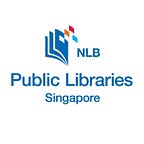How to Start Building a Personal Brand
American entrepreneur and author, Tim Ferriss, known for his 4-Hour Work Week self-help book, said, “Personal branding is about managing your name — even if you do not own a business — in a world of misinformation, disinformation, and semi-permanent Google records. Going on a date? Chances are that your “blind” date has Googled your name. Going to a job interview? Ditto.”
In today’s competitive work environment, you need to be doing more than just checking off the boxes of a job description listed on LinkedIn. Learning how to brand yourself will help you to distinguish yourself from your competition and leave a lasting impression.
Regardless of where you are and how you have been perceived before, you can shape your identity in a way that profoundly influences your growth and career advancement. Crafting your personal brand is crucial for shaping your professional identity. Think of it as a tool that makes you relatable to the people around you and helps you highlight the value you can bring.
People tend to confuse reputation with personal brand. However, they are not the same. While reputation is about your credibility and how you are perceived generally, your personal brand is something you can create with intent. It’s a purposeful endeavour to boost your visibility and highlight your skills through your personality.
Creating a personal brand requires a bit of thought. When others think of you, your name should evoke the distinctive qualities, values, and principles that define you. To kickstart your personal branding journey, here is a three-pronged approach to guide you.
1. Define Your Identity
This may feel difficult but one way to approach it is to think of legacy — how would you like your colleagues, family, friends and people around you to remember you? Your answer is directly related to the qualities you have developed as a person and the value-add you bring to the lives of the people around you.
Sharp with words? Attentive to details? Solution-oriented? If you have such qualities, take them to the workplace — it is crucial to clearly communicate your specific strengths and skills to your colleagues and employers. Think about how you can strategically align your professional goals with your capabilities.
This exercise in defining your identity will empower you with a self-awareness that allow you to confidently articulate your worth, identify your gaps, and position yourself as an invaluable asset in the competitive professional landscape.
2. Make Your Impressions Count
You‘ll never have a second chance to make a great first impression so be mindful about how you dress and present yourself. The colour, comfort, fit, and style of clothing has a direct impact on confidence levels. What you wear can affect your mood and emotions, causing you to behave differently, therefore affecting your self-image. Your choice of attire doesn’t just shape how others perceive you, it also plays a role in shaping your own self-perception.
Equally important is your digital image. For example, if you’re a freelance graphic designer, a sleek and visually appealing website that showcases your portfolio, client testimonials, and a brief biography can help you leave good impression on potential clients. The design style and aesthetic choices you make for the website can also help strengthen your overall brand identity.
You can also leverage social media to highlight your design work, creative process and insights, or even behind-the-scenes of your projects.
Ensure that your online presence reflects your brand identity and values, and you are consistent in your messaging and tone. While different social media channels are fit for different purposes, they should all come together to convey a coherent and strong brand identity of you.
3. Network
Visibility is more than what meets the eye, in this case. Networking and making your presence known is crucial for personal branding as it opens doors to opportunities, allowing you to showcase your skills and foster meaningful industry relationships.
To start, connect with your co-workers and higher-ups in your organisation to form closer professional relationships. Making a conscientious effort to get to know somebody better often gets reciprocated and may help you for projects at work.
You can also choose to widen your circle by reaching out to other industry professionals via social media platforms like LinkedIn. In fact, NLB’s Personal Branding in LinkedIn for Working Adults is a perfect avenue to figure out your footing on LinkedIn, where you can share expertise, gain insights on career prospects, and stay updated on trends.
There are also books you can delve into to help you further in networking:
Never Eat Alone: And Other Secrets to Success, One Relationship at a Time by Keith Ferrazzi
Get the book here: Physical Book, eBook, Audiobook
Give and Take: Why Helping Others Drive Our Success by Adam Grant
Get the book here: Physical Book, eBook
How to Win Friends and Influence People by Dale Carnegie
Personal branding will be an ongoing journey as you grow and develop through the stages of your life and career. After all, reinvention is possible at every stage. For more resources and programmes to help you in journey for your professional development, you can also check out NLB’s Get Professional series.
